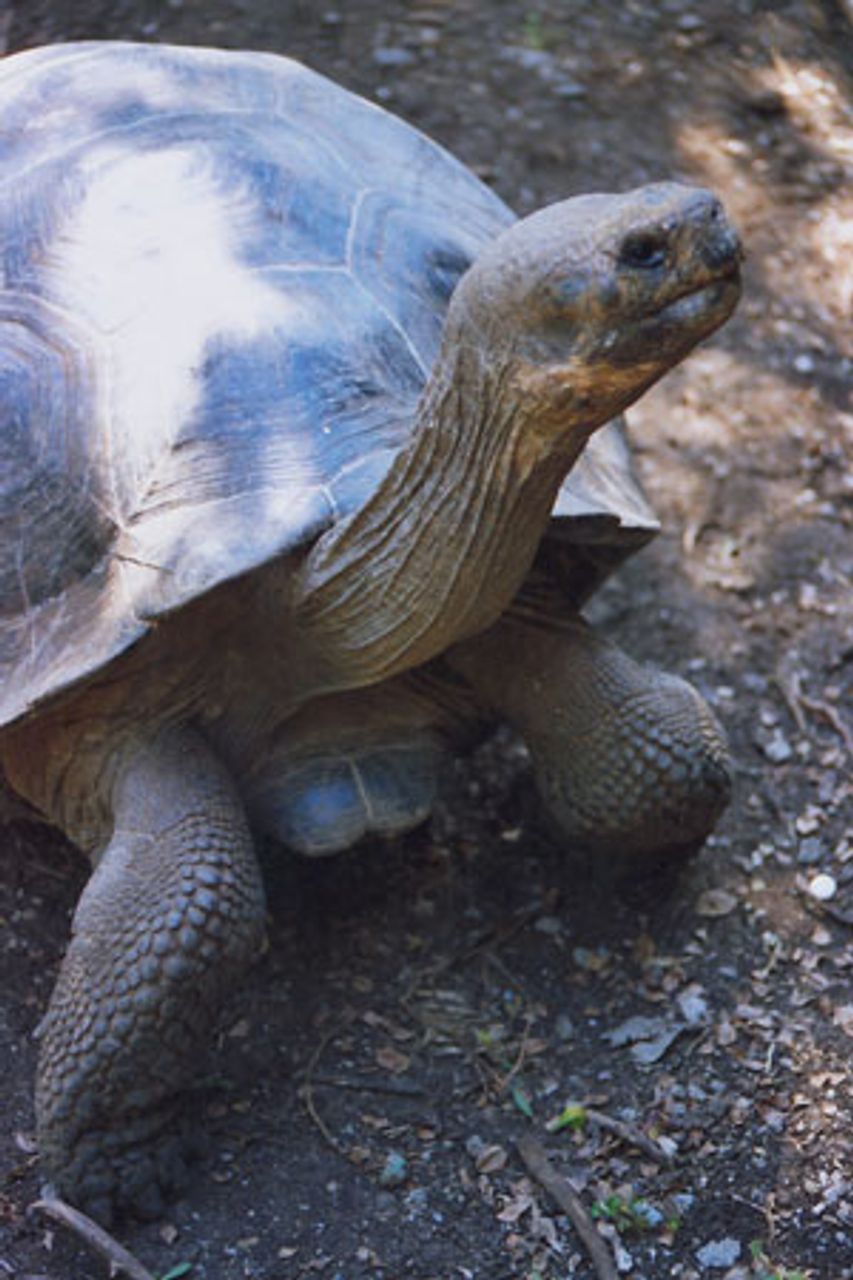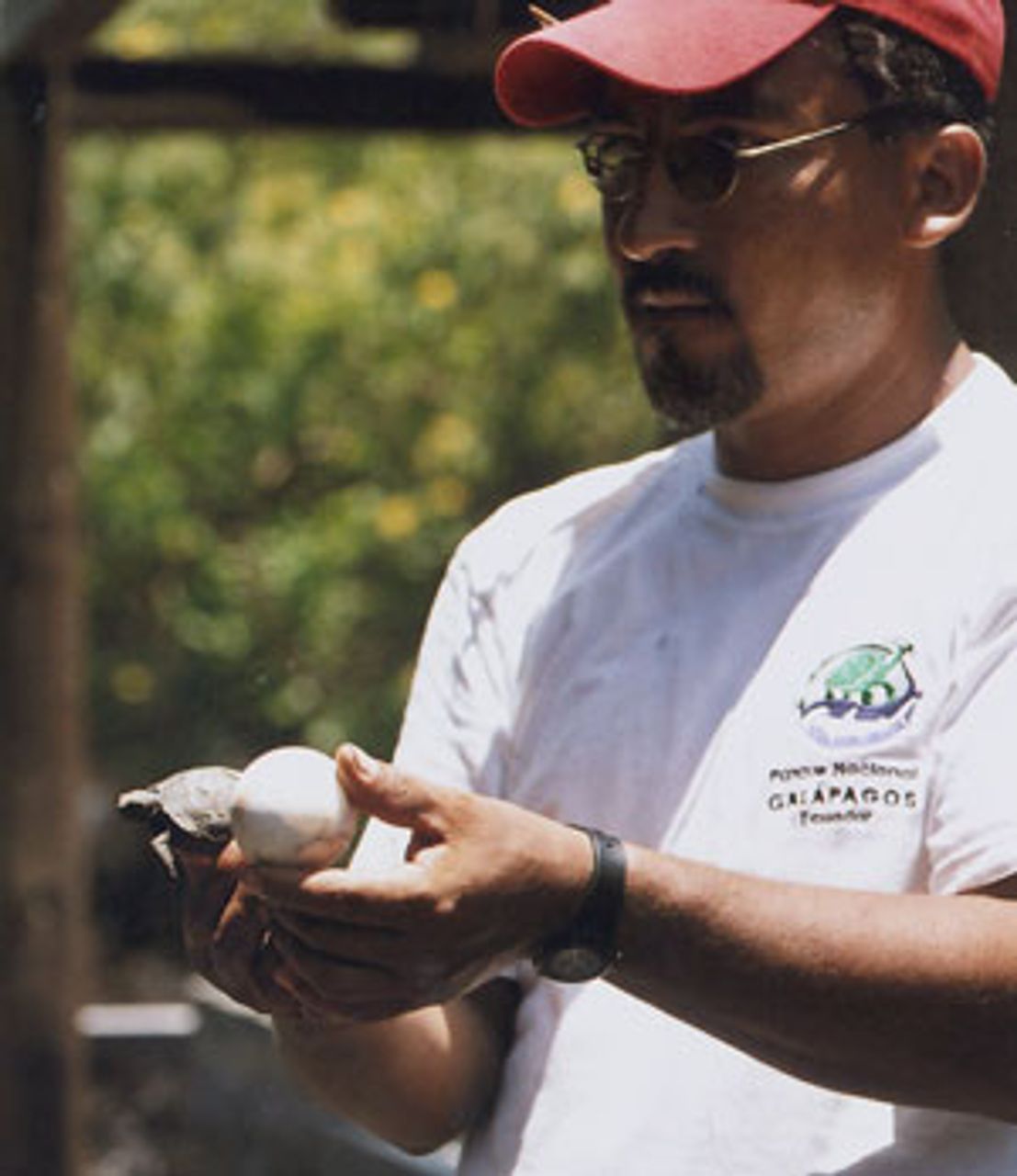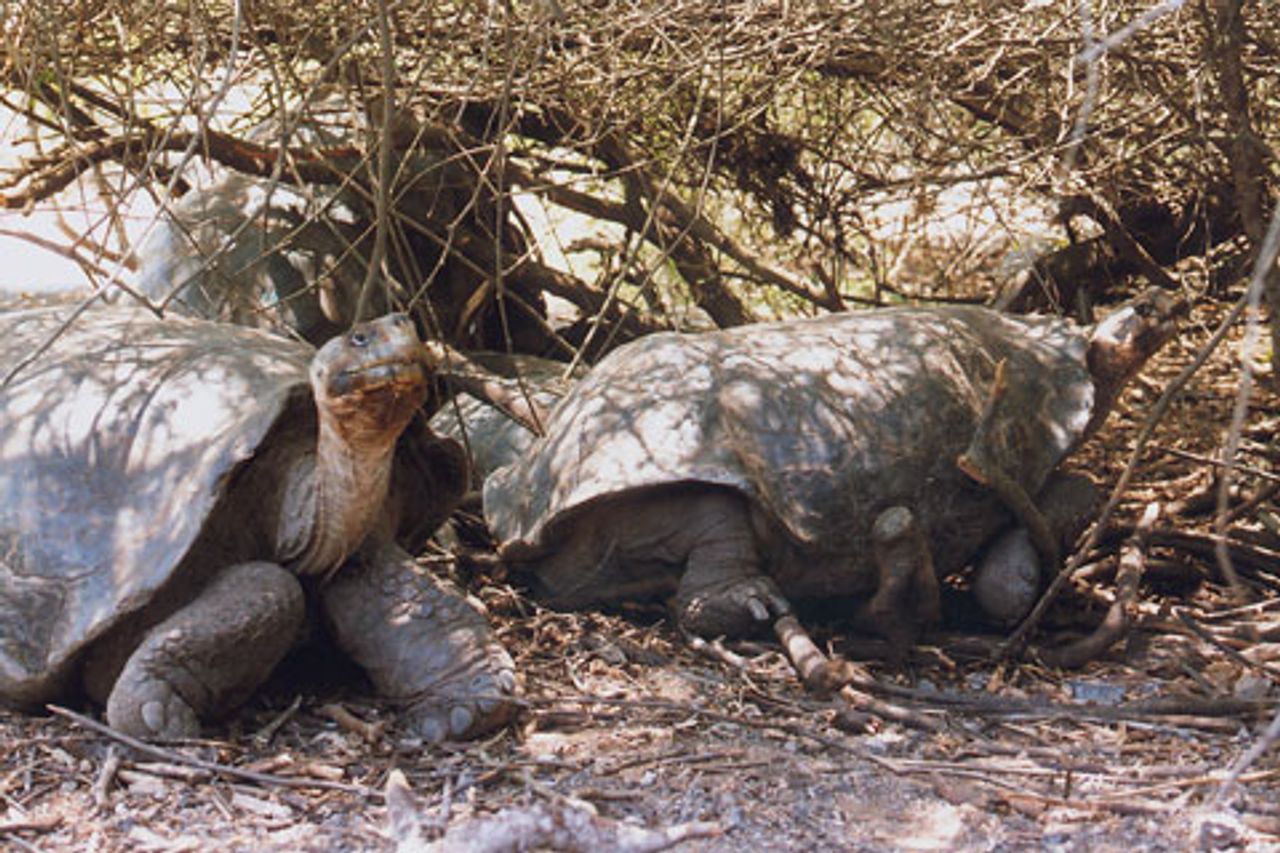A team of biologists from Yale University has found evidence that a species of Galapagos tortoise, believed extinct for more than a century, has survived in one of the remote parts of the Galapagos island chain. The species is one of those studied and analyzed by Charles Darwin more than 150 years ago as part of the formulation of the theory of evolution.
 A giant Galapagos tortoise at a nature preserve
A giant Galapagos tortoise at a nature preserveFour of the fifteen subspecies of giant tortoises were hunted to extinction in the 19th century, when the islands were a frequent stopping place for whaling ships. This was believed to be the fate of Chelonoidis elephantopus on the island of Floreana, a species distinctive for the saddle-backed shape of its shells, as opposed to the dome-like shell of most other species of Galapagos tortoises.
In 1994, a team of biologists studying the Chelonoidis becki species on Isabela, the largest of the Galapagos islands, found after taking blood samples that there were genetic markers of an alien species intermingled with the DNA of Chelonoidis becki. Subsequent examination of bones and shells in museum collections confirmed that the “aliens” were actually Chelonoidis elephantopus.
Yale mounted a large-scale expedition to Isabela in 2008, in the course of which 40 biologists took blood samples from 1,669 giant tortoises, about one-fifth of all those on the island. The technique was for a team of people to flip the 400-pound tortoises on their backs, then reach into the shell and pull out a leg, then take a blood sample for analysis.
The scientists found 84 tortoises which had DNA indicating hybrid parentage, from cross-breeding between C. becki and C. elephantopus, including 26 with mitochondrial DNA from C. elephantopus, which is passed down only from mother to daughter.
Many of the hybrids appeared to be first generation crosses, and several were comparatively young, under 15 years old. Since the giant Galapagos tortoises frequently live to 100 or 150 years old, it is likely that the parents are alive, although they have not yet been found.
After years of analysis and testing, the findings of the 2008 expedition were reported in the January 2012 edition of Current Biology, then more widely in the press.
 Naturalist holds a baby tortoise and tortoise egg
Naturalist holds a baby tortoise and tortoise eggIn their paper, Yale biologists Ryan Garrick and Edgar Benavides wrote, “To our knowledge, this is the first rediscovery of a species by way of tracking the genetic footprints left in the genomes of its hybrid offspring.” Garrick and Benavides estimate that it would have taken at least 38 pure-bred tortoises of Floreana descent to produce the level of genetic diversity seen in the modern hybrids.
A second expedition at the end of this year will seek to examine the entire tortoise population of Isabela, in hopes of finding at least one pure-bred C. elephantopus, which would make it possible to reestablish the species through selective breeding, and then reinstate them in their native island, Floreana.
It was the variety of species across the Galapagos Islands—most famously birds, but also the tortoises—each adapted in unique ways to the environment of specific islands, that helped Darwin develop the theory of evolution.
 Two tortoises in the wild on Isabela island
Two tortoises in the wild on Isabela islandDarwin visited the Galapagos Islands in 1835 and made an extensive description of the C. elephantopus species, which lived on Floreana, the southernmost island in the archipelago. Within ten years, whalers had killed off every tortoise on Floreana.
The Yale scientists speculated that the same sailors who slaughtered the tortoises for food in the 19th century might be responsible for their survival, because they might have transported tortoises from Floreana to Isabela, a distance of 200 miles across ocean waters, far beyond their ability to swim.
The tortoises could survive on Isabela, the largest of the islands, because it has no source of fresh water for human habitation and was not settled until after the Galapagos chain became a national park within Ecuador.
